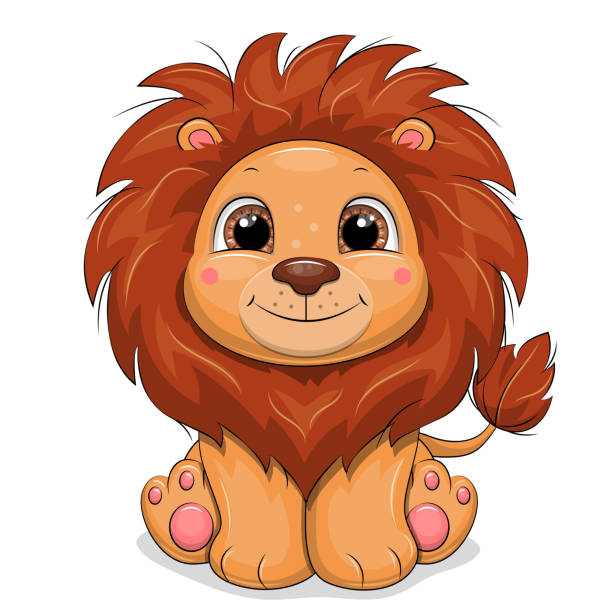Drawing a cartoon lion is an exciting venture for any artist, offering the opportunity to explore creativity while mastering the basics of cartooning. Whether you’re a budding artist or someone looking to refine your skills, this guide will walk you through the process of drawing a charismatic cartoon lion, step by step.
What You Will Need
- Pencil;
- Eraser;
- Drawing paper;
- Colored pencils or markers (optional for coloring).
Step-by-Step Instructions
Sketching the Basic Shape
Start with a large circle for the head and a smaller oval for the body. This will serve as the foundation of your lion.
Adding the Mane and Body
Outline a fluffy mane around the head circle, using wavy lines. For the body, connect the head and body with gentle curves to indicate the neck and back.
Facial Features and Tail
Draw the lion’s facial features, including eyes, nose, and mouth. Don’t forget the ears peeking out from the mane. Add a swirly tail with a tuft of fur at the end.
Finalizing Your Drawing
Erase any unnecessary lines and go over your drawing with a pen or marker. Add details like fur texture and color in your lion as desired.
Comparison of Cartoon Lion Styles
| Feature | Traditional Cartoon Lion | Modern Cartoon Lion |
|---|---|---|
| Mane | Rounded, less detailed | More textured, detailed |
| Body | Simplified, fewer curves | Dynamic, with exaggerated features |
| Eyes | Small, simple | Large, expressive |
| Expression | Generally passive | Wide range, from fierce to friendly |
This table helps illustrate the evolution of cartoon lion styles from traditional to modern interpretations, encouraging artists to find their unique expression.
Tips for Perfecting Your Cartoon Lion
- Practice Different Mane Styles: The mane is a lion’s most distinctive feature. Experiment with various shapes and textures;
- Experiment with Expressions: A lion can be fierce, friendly, or even silly. Changing the eyebrows and mouth shape can dramatically alter its expression;
- Use References: Look at pictures of real lions to understand their anatomy and bring realism to your cartoon;
- Add Dynamic Poses: Practice drawing your lion in different poses to bring your character to life.
Exploring the Habitat: Backgrounds That Roar
An often-overlooked aspect of character drawing is the setting or background. A well-thought-out background can breathe life into your cartoon lion, placing it in a context that enhances its story and character. Whether it’s the sprawling savannah, a dense jungle edge, or a whimsical, undefined space, the background sets the stage for your lion’s adventures.
- Savannah Scenes: Use wide, open spaces with sparse trees and golden grass to situate your lion in its natural habitat. This not only adds realism but also provides a stark backdrop that makes your lion pop;
- Jungle Edges: For a more mysterious or adventurous vibe, placing your lion at the edge of a jungle or forest can be intriguing. This setting can introduce elements like vines, shadows, and a variety of flora to frame your lion;
- Whimsical Worlds: Not all cartoon lions need to stick to realistic habitats. Creating a unique, imaginative world can give your lion a personality boost. Think floating islands, colorful landscapes, or even outer space!
Incorporating a background into your drawing involves understanding perspective, color theory, and composition. Start simple and gradually add details as you become more comfortable with the setting.
The Lion’s Pride: Adding Other Characters
A lion rarely roams alone—introducing other characters, whether they’re fellow lions or different animals altogether, can create dynamic scenes and stories. Drawing multiple characters requires attention to their interactions, proportions, and how they fit into the overall scene.
- Family Pride: Drawing a family of lions can show tender moments or depict the pride in action. Pay attention to the size and features of each lion, showing age and gender differences subtly;
- Animal Friends: Pairing your lion with unlikely animal friends can lead to cute or comedic scenarios. Consider the relationships between animals and how they might interact in both realistic and fantastical settings;
- Antagonists: Every story can benefit from a little conflict. Introducing an antagonist, maybe a hyena or a rival lion, can add tension and excitement to your drawing. This also allows you to explore expressions and poses further, depicting a range of emotions and actions.
When adding other characters, consistency in style is crucial. Ensure all characters share the same cartoonish feel, keeping the integrity of the scene intact. Experiment with group dynamics, positioning, and how each character contributes to the narrative you wish to convey.
Video Guide
To answer all your questions, we have prepared a video for you. Enjoy watching it!
Conclusion
Drawing a cartoon lion is not just an artistic endeavor but a journey into the wild world of creativity. By following these steps and incorporating your style, you can create a cartoon lion that stands out. Remember, the key to mastering any art form is practice, so keep your pencils sharp and your imagination wild!
